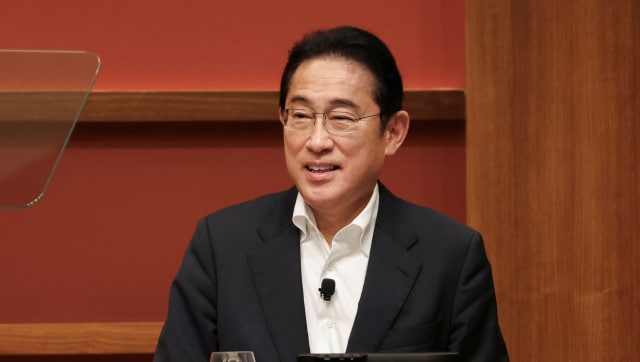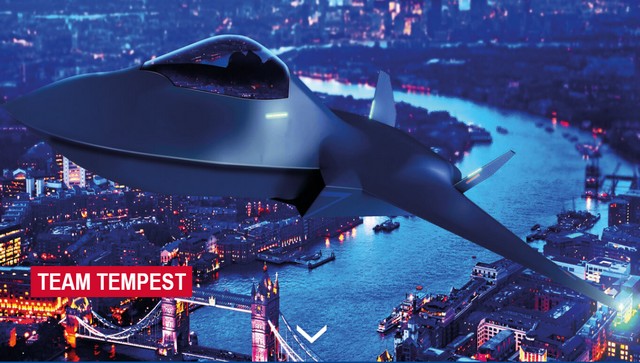The UK, Italy and Japan have teamed up to develop a new stealth fighter jet. This comes a year after the countries agreed – with an eye on Russia, China and North Korea – to produce the aircraft. “This combat air aircraft, due to take to the skies by 2035, aims to harness next-generation technologies and become one of the world’s most advanced, interoperable, adaptable and connected fighter jets in service globally,” Britain’s defence ministry said after the signing in Tokyo. “The supersonic stealth jet will boast a powerful radar that can provide 10,000 times more data than current systems, giving a battle-winning advantage,” the statement said. But what do we know about the deal and the craft? Why is this happening? Let’s take a closer look: What we know about the craft As per The National, the aircraft is known as the Tempest in the UK. The proposed plan calls for the jets to have software and hardware that can easily be swapped in and out – depending on the mission being undertaken. Also, the craft will have no physical instruments.
Instead, pilots will control the craft via virtual-reality headsets.
Financial Times said the proposed craft would be arguably the most high-tech fighter in history. As per the outlet, the plan calls for the craft to have hypersonic weapons that can achieve the speed of Mach 5, AI-controlled drones and energy weapon systems to target opponents. As per Al Jazeera, the programme melds the UK and Italy’s Future Combat Air System project – also called Tempest – with Japan’s F-X programme. The partnership will be called the Global Combat Air Programme (GCAP). Under the plan, a joint body called the GCAP International Government Organization will manage the private sector joint venture — which includes Japan’s Mitsubishi Heavy, Britain’s BAE Systems PLC and Italy’s Leonardo — to oversee the aircraft’s development. The organisation, which will be staffed by several hundred people from the three countries, is tasked with distributing work in different areas, such as the engine and avionics.
The organisation will be headquartered in Britain and headed by a Japanese official.
The joint venture will be led by an Italian representative. The top posts will rotate every few years, Japanese defence officials said. Each nation’s Parliament must now ratify the pact, as per The National. Why is this deal happening? Japan, which is rapidly building up its military, hopes to have a greater capability to counter China’s rising assertiveness while welcoming Britain’s bigger presence in the Indo-Pacific region. As per Financial Times, Japan has thus far only collaborated with US firms for major defence works. “[It] will expand Japan’s network to Europe and contribute to strengthening its security environment, while potentially making exports possible,” Katsutoshi Kawano, the former chief of Japan’s Self-Defense Forces’ Joint Staff was quoted as saying by the newspaper. Defence Minister Minoru Kihara said at a joint news conference with his British and Italian counterparts, Grant Shapps and Guido Crosett, that co-developing a high-performance fighter aircraft is “indispensable to securing air superiority and enabling effective deterrence” at a time that Japan faces an increasingly severe security environment. Kihara said no individual nation can defend itself today, adding that securing the technology and funding to develop an advanced fighter jet involves large risks. [caption id=“attachment_13474692” align=“alignnone” width=“640”] Japan hopes to have a greater capability to counter China’s rising assertiveness while welcoming Britain’s bigger presence in the Indo-Pacific region. Reuters[/caption] He said the joint trilateral Global Combat Air Program is a “historic program” enabling the countries to work together to create a new fighter jet while reducing risks. Shapps said the joint project will develop cutting-edge technology as well as “a new era of prosperity” involving thousands of people working on the project. “It will strengthen our collective security,” he said.
Japan hopes to have a greater capability to counter China’s rising assertiveness while welcoming Britain’s bigger presence in the Indo-Pacific region. Reuters[/caption] He said the joint trilateral Global Combat Air Program is a “historic program” enabling the countries to work together to create a new fighter jet while reducing risks. Shapps said the joint project will develop cutting-edge technology as well as “a new era of prosperity” involving thousands of people working on the project. “It will strengthen our collective security,” he said.
“The risks and problems from Europe to Indo-Pacific are clear for all to see.”
SCMP quoted Shapps as saying that the programme is “crucial to global security and we continue to make hugely positive progress toward delivery of the new jets to our respective air forces in 2035.” “The UK-based headquarters will also see us make important decisions collaboratively and at pace, working with our close partners Italy and Japan, and our impressive defence industries, to deliver an outstanding aircraft,” he added as per Insider Media. “As we face the most complex security environment since World War II … securing aerial superiority continues to be a crucial challenge that we must achieve,” Kihara added. Japan is moving ahead despite delayed approval at home in easing its current policy that bans the export of lethal weapons. The restriction under Japan’s postwar pacifist Constitution does not allow the country to sell a jointly developed fighter jet and possibly complicates the project, since Britain and Italy hope to be able to sell the new aircraft. A Japanese government panel has been discussing the easing of military sales and has agreed to relax restrictions on the transfer of licensed technology and equipment. But it recently postponed a decision on easing the policy for the joint fighter jet until early next year. Defence officials refused to discuss how the situation would affect the joint project. The project is the first time that Japan will participate in a multinational organisation to jointly develop new military equipment. To counter growing threats from China, North Korea and Russia, Japan has been expanding its defence partnerships with countries in Europe, Southeast Asia and the Indo-Pacific, including Australia and the Philippines. “We are committed to upholding the rules-based, free and open international order, which is more important than ever at a time when these principles are contested, and threats and aggression are increasing,” the countries said in a statement, as per Al Jazeera. With inputs from agencies
)